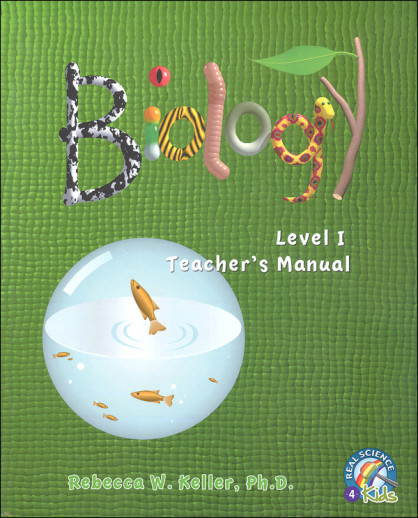We use cookies to make your experience better. To comply with the new e-Privacy directive, we need to ask for your consent to set the cookies. Learn more.
Biology Level 1 Teacher's Manual
Each 70-page student text is formatted similarly to a high-school text, with each chapter broken down into smaller segments on more specific topics. Although the text introduces concepts most children won't encounter in their elementary science curriculum, the explanations are clear and are presented in a way that they can understand. To give you an example of the types of topics covered, in Chemistry, chapters discuss matter, molecules, types of chemical reactions (including combination, decomposition and exchange reactions), acids, bases, neutralization, polymers, DNA, and more. Biology covers taxonomy, cells, photosynthesis, plants, protists, life cycles of the butterfly and frog, the water cycle, and more. Physics includes chapters on: force, work, potential and kinetic energy, motion, electrical energy and charges, electromagnetism, conservation of energy, and so on. Astronomy is the newest edition in this series and its 80+ pages include chapters on: What is astronomy, astronomer's toolbox (telescopes, Mars Rover, Hubble, etc.), earth, moon and sun, planets, solar system, other systems, our galaxy, other galaxies, and the universe. Each text contains ten chapters in all, split up into smaller segments on more specific sub-topics. Each segment focuses on one topic, and is short enough to read at one sitting without taxing short attention spans. The pages also incorporate colorful graphics and simple diagrams, and important words in the text areprinted in red. A summary wraps up each chapter, recapping the main points kids shouldtake from the reading, and a combined glossary index is included at the end of each book.
| Product Format: | Softcover Book |
|---|---|
| Brand: | Gravitas Publications |
| Grades: | 4-6 |
| ISBN: | 9781936114399 |
| Length in Inches: | 11 |
| Width in Inches: | 8.5 |
| Height in Inches: | 0.25 |
| Weight in Pounds: | 0.55 |

